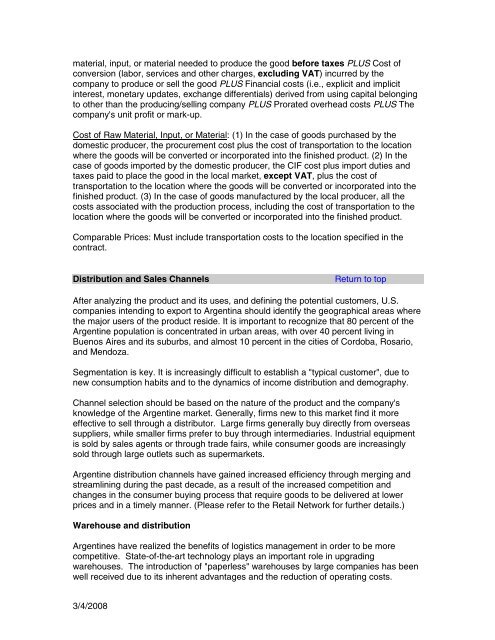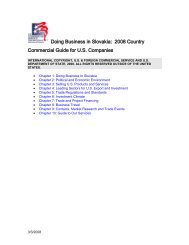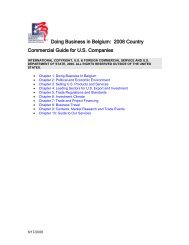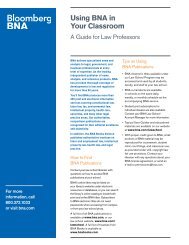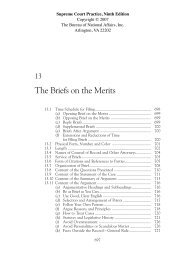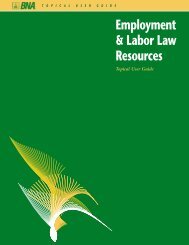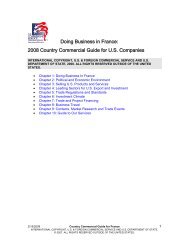Create successful ePaper yourself
Turn your PDF publications into a flip-book with our unique Google optimized e-Paper software.
material, input, or material needed to produce the good before taxes PLUS Cost of<br />
conversion (labor, services and other charges, excluding VAT) incurred by the<br />
company to produce or sell the good PLUS Financial costs (i.e., explicit and implicit<br />
interest, monetary updates, exchange differentials) derived from using capital belonging<br />
to other than the producing/selling company PLUS Prorated overhead costs PLUS The<br />
company's unit profit or mark-up.<br />
Cost of Raw Material, <strong>In</strong>put, or Material: (1) <strong>In</strong> the case of goods purchased by the<br />
domestic producer, the procurement cost plus the cost of transportation to the location<br />
where the goods will be converted or incorporated into the finished product. (2) <strong>In</strong> the<br />
case of goods imported by the domestic producer, the CIF cost plus import duties and<br />
taxes paid to place the good in the local market, except VAT, plus the cost of<br />
transportation to the location where the goods will be converted or incorporated into the<br />
finished product. (3) <strong>In</strong> the case of goods manufactured by the local producer, all the<br />
costs associated with the production process, including the cost of transportation to the<br />
location where the goods will be converted or incorporated into the finished product.<br />
Comparable Prices: Must include transportation costs to the location specified in the<br />
contract.<br />
Distribution and Sales Channels Return to top<br />
After analyzing the product and its uses, and defining the potential customers, U.S.<br />
companies intending to export to <strong>Argentina</strong> should identify the geographical areas where<br />
the major users of the product reside. It is important to recognize that 80 percent of the<br />
Argentine population is concentrated in urban areas, with over 40 percent living in<br />
Buenos Aires and its suburbs, and almost 10 percent in the cities of Cordoba, Rosario,<br />
and Mendoza.<br />
Segmentation is key. It is increasingly difficult to establish a "typical customer", due to<br />
new consumption habits and to the dynamics of income distribution and demography.<br />
Channel selection should be based on the nature of the product and the company's<br />
knowledge of the Argentine market. Generally, firms new to this market find it more<br />
effective to sell through a distributor. Large firms generally buy directly from overseas<br />
suppliers, while smaller firms prefer to buy through intermediaries. <strong>In</strong>dustrial equipment<br />
is sold by sales agents or through trade fairs, while consumer goods are increasingly<br />
sold through large outlets such as supermarkets.<br />
Argentine distribution channels have gained increased efficiency through merging and<br />
streamlining during the past decade, as a result of the increased competition and<br />
changes in the consumer buying process that require goods to be delivered at lower<br />
prices and in a timely manner. (Please refer to the Retail Network for further details.)<br />
Warehouse and distribution<br />
Argentines have realized the benefits of logistics management in order to be more<br />
competitive. State-of-the-art technology plays an important role in upgrading<br />
warehouses. The introduction of "paperless" warehouses by large companies has been<br />
well received due to its inherent advantages and the reduction of operating costs.<br />
3/4/2008


